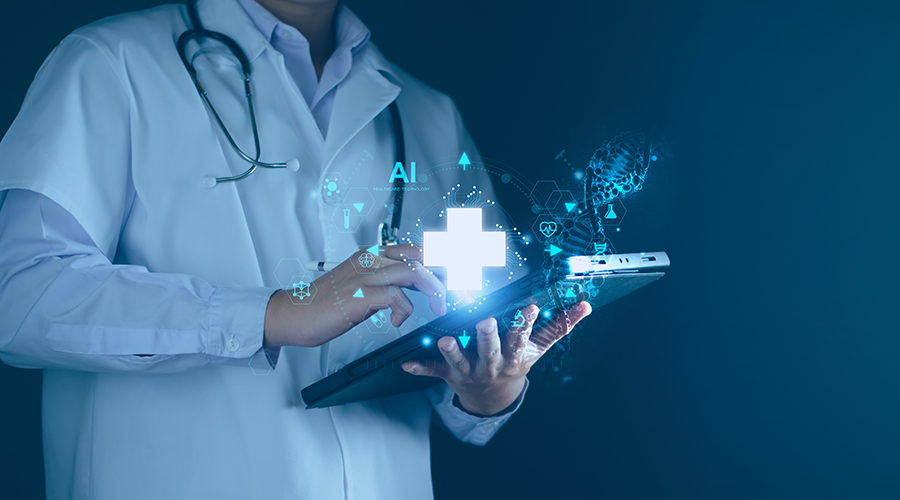In the ever-evolving healthcare landscape, technological advances play a pivotal role in shaping the patient experience. From the seamless integration of electronic medical records to cutting-edge applications of AI and gene therapy, the impact technology has on healthcare environments varies in urban, suburban and rural settings.
For healthcare facilities managers, the proliferation of technology throughout their buildings – including software for maintenance management, energy analysis and space management – has raised the stakes on issues ranging from system integration to cybersecurity.
When managed effectively, the transformation with the help of these new technologies enhances the efficiency of healthcare delivery and fosters a more personalized and accessible system.
Impact of technology
As healthcare facilities managers navigate these technological advances in healthcare, it becomes evident that the impact is not confined to one specific setting. Regardless of the healthcare facility’s location, technological innovation impacts each environment differently while ultimately enhancing patient care and facilities management for all.
One of the most beneficial technologies is electronic medical records. These records allow for a more comprehensive and holistic approach to medical care and enable better management of patient care. While it sounds simple, putting it into practice has been challenging.
Allowing the software to communicate seamlessly, determining the way it is shared and ensuring its protection has taken time to develop. Organizations are almost there, but some issues remain with standardizing the technology for the ease of transfer of patient information. Ensuring the accessibility of entire sets of medical records to the care team or facilitating a smooth transfer of records to a new doctor or pharmacist continues to pose a significant challenge.
The capability to share medical information with an emergency room doctor marks a significant stride in aligning mental and physical health across all modalities. This capability empowers a patient's care team and pharmacists to make more informed decisions regarding prescription medications, comprehending their interactions and optimizing their effectiveness tailored to the individual. This new technology offers a more convenient and user-friendly experience for patients.
Through a web-based portal, patients can schedule appointments, view their doctors' information, access exam results, track medications and renewals and receive notifications from their care team, including updates on follow-up appointments or potential delays. This all-in-one interface makes for a seamless and positive experience.
Urban vs. suburban and rural locations
In urban settings, the focus on advanced technology throughout healthcare facilities is on integrating advanced technologies like artificial intelligence (AI) and gene therapy into healthcare practices and overall operations to expedite and enhance patient care. These technologies are revolutionizing treatment options, providing personalized care and improving diagnostic accuracy.
Cell and gene therapies and DNA testing are developing individualized treatments for various illnesses and cancers, albeit currently at high costs. These costs will drop as the technology advances and becomes more widespread. But when it comes to suburban and rural areas, technology is leveraged to improve accessibility and patient experience.
The use of telehealth and wearable health devices for monitoring various chronic conditions, such as glucose levels and EKG readings, is increasingly popular. These devices provide more accurate readings and can transmit data in real-time to the healthcare team. These remote monitoring devices improve preventive care and elevate patient engagement.
Telemedicine is becoming the first step in the care process, leveraged in making initial decisions for patient care. Telehealth and AI use data gathered from remote exams to connect patients more accurately with specialty care physicians based on AI analysis and big data.
Telehealth also helps patients with chronic health issues keep up with more frequent examinations in managing their diseases. Telehealth is quickly becoming the best model for behavioral healthcare. These technologies facilitate remote monitoring and consultations, particularly beneficial in rural settings where access to healthcare facilities is limited or the services needed are too far away for regular visits.
Integrating healthcare into everyday technology, such as linking health metrics to providers, represents a significant shift towards a more connected and proactive patient-based healthcare experience, where patients are active managers of their health. This model is increasingly being adopted in suburban areas, as seen already with some ambulatory care facilities, and is likely to become more prevalent in rural settings.
Advanced imaging technologies, including dual-energy CT scans, also have improved the detection of diseased tissue. This improvement has enabled doctors to intervene earlier, preventing the growth of tumors. The impact of early detection on cancer treatment is remarkable and would not have been possible without imaging technology advances.
Artificial and augmented intelligence, combined with improved 3D imaging, also improves detection and produces specific treatment options while allowing surrounding healthy tissue to be unaffected. Hybrid operating rooms, which have existed for many years, are evolving with the integration of advanced imaging and robotic surgical devices.
These advances have greatly enhanced the precision and complexity of surgeries, giving surgeons the ability to perform detailed procedures that were previously impossible.
These technological innovations, while varying in their application across different environments, collectively contribute to a more efficient, accessible and personalized healthcare system and more efficient and reliable facilities. As managers look toward the future, they can expect even greater integration of technology in all aspects of healthcare, including facilities management, diagnosis, treatment, patient monitoring and engagement in urban, suburban and rural settings.
Al Thompson is a managing executive with TPG Architecture.

 Building Sustainable Healthcare for an Aging Population
Building Sustainable Healthcare for an Aging Population Froedtert ThedaCare Announces Opening of ThedaCare Medical Center-Oshkosh
Froedtert ThedaCare Announces Opening of ThedaCare Medical Center-Oshkosh Touchmark Acquires The Hacienda at Georgetown Senior Living Facility
Touchmark Acquires The Hacienda at Georgetown Senior Living Facility Contaminants Under Foot: A Closer Look at Patient Room Floors
Contaminants Under Foot: A Closer Look at Patient Room Floors Power Outages Largely Driven by Extreme Weather Events
Power Outages Largely Driven by Extreme Weather Events